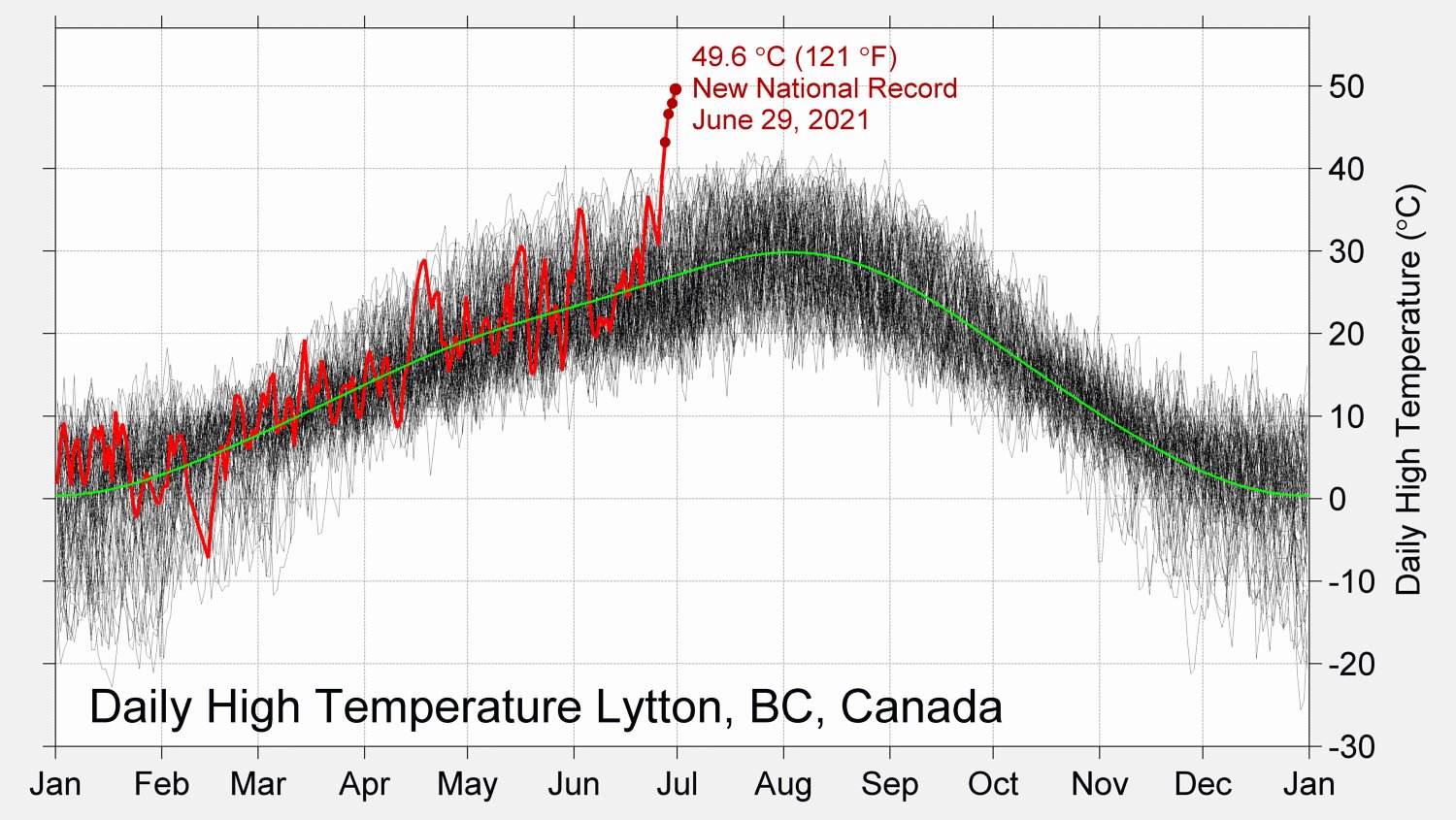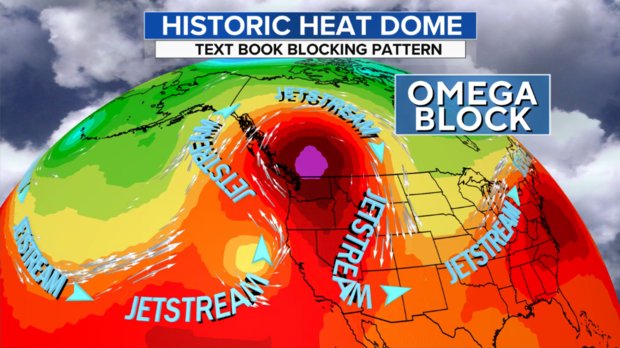Record heatwave & wildfires in British Colombia
Sentinel-3 SLSTR LST acquired on 29 June 2021 from 17:22:07 to 19:06:06 UTC
Sentinel-2 MSI acquired on 29 June 2021 at 19:09:19 UTC
Sentinel-5P TROPOMI AER_AI & CO acquired on 30 June 2021 from 19:25:30 to 21:42:00 UTC
Sentinel-3 SLSTR RBT acquired on 03 July 2021 from 18:59:22 to 19:02:22 UTC
Sentinel-2 MSI acquired on 29 June 2021 at 19:09:19 UTC
Sentinel-5P TROPOMI AER_AI & CO acquired on 30 June 2021 from 19:25:30 to 21:42:00 UTC
Sentinel-3 SLSTR RBT acquired on 03 July 2021 from 18:59:22 to 19:02:22 UTC
Keyword(s): Climate change, global warming, emergency, mountains, wildfires, Canada, Pacific
Palm Springs, a Californian city in the Colorado desert, recorded its heat record at 50.6°C.

"Stunning breakout far above all previously measured values to set a new national temperature record for Canada of 49.6 °C. This heatwave has reached further above historical means than any other summer heatwave previously recorded anywhere in North America." "Prior to this week, the Canadian National temperature record had been 45°C, set in 1937. Hence, the temperatures recorded at Lytton actually set a new national record for three days in a row, ultimately eclipsing the original record by a massive +4.6°C." - Source: Dr. Robert Rohde.
"The all-time high of 49.6°C set in British Columbia on Tuesday has left weather and climate experts all over the world shocked, speechless and deeply concerned about the future of the planet." wrote Jason Samenow for The Washington Post. "The scorching temperature set in the village of Lytton obliterated Canada’s previous national temperature record, established before this week’s heat wave, by 4.6°C. Lytton, located about 100 km northeast of Vancouver, broke that previous all-time record of 45.0°C on three straight days, soaring to 46.8°C on Sunday, 47.0°C on Monday and finally 49.6°C on Tuesday. Before this siege, it had stood since 1937."
"'Lytton was the perfect spot (in a manner of speaking) to break this record three days in a row,' wrote Dennis Mersereau, a freelance weather writer. 'The tiny town sits in a tight valley along the Fraser River that cuts longitudinally through the heart of British Columbia. Lytton’s low-lying location makes it an effective heat sink during a record-shattering heat wave.'"
"This record stands out as extraordinary on numerous counts:
- It’s hotter than any temperature recorded in the Lower 48 states outside the Desert Southwest. Only four states have seen a higher temperature. It’s even 2 degrees above Las Vegas’s all-time high of 47.3 °C and just half a degree from Phoenix’s all-time high of 50°C.
- It’s hotter than any temperature observed in Europe or South America, according to world weather records expert Maximiliano Herrera. Only 26 countries on the planet have been as hot or hotter, he wrote.
- It is the most extreme high temperature observed beyond 45 degrees latitude, according to Herrera.
- It was the highest temperature in North America on Tuesday, tied with Death Valley, Calif., notorious for holding the record for the planet’s most extreme heat.
- Lytton’s average high temperature at this time of year is a mere 25 degrees, meaning Tuesday’s record high was nearly 25 degrees above normal.
Jeff Berardelli states for CBS News: "The heat wave baking the U.S. Pacific Northwest and British Columbia, Canada, is of an intensity never recorded by modern humans. By one measure it is more rare than a once in a 1000 year event — which means that if you could live in this particular spot for 1000 years, you'd likely only experience a heat dome like this once, if ever." "The heat is being caused by a combination of a significant atmospheric blocking pattern on top of a human-caused climate changed world where baseline temperatures are already a couple to a few degrees higher than nature intended. This heat wave comes on the heels of another historic heat wave less than two weeks ago that baked the U.S. Intermountain West, Desert Southwest and California with hundreds of record highs."
In another article, he explains the heat dome phenomenon: "A heat dome is a essentially a mountain of warm air built into a very wavy jet stream, with extreme undulations. When the jet stream — a band of strong wind in the upper levels of the atmosphere — becomes very wavy and elongated, pressure systems can pinch off and become stalled or stuck in places they typically would not be." "In this case, a ridge of high pressure, which is the heat dome, has become lodged in the Pacific Northwest. It is acting as a block in the atmosphere, not allowing the weather to move. The specific type of block is called an Omega block, because it looks like the greek letter Omega, and the hot air is pooling inside." "Areas of high pressure, like heat domes, have sinking air. This compresses the air on the ground and through compression it heats the air column. In addition, winds are moving downslope from the mountains downward into cities".

The heat dome is holding record-high temperatures in place over the Pacific Northwest, 59 temperature records broken in a single day as B.C. swelters under 'heat dome' - Source: CBS News













